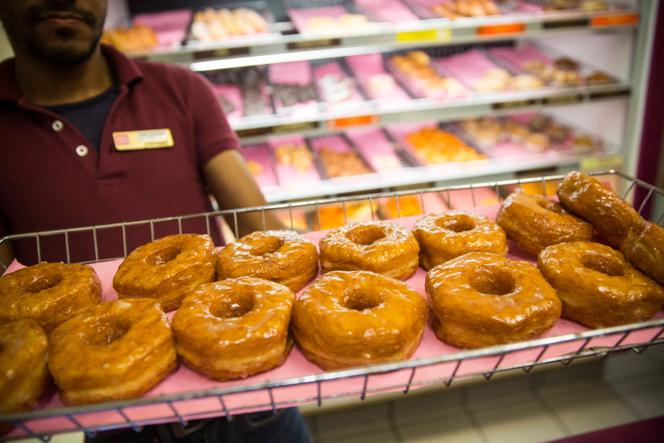


In the last few weeks, Trader Joe's stores have stocked their shelves with Plumcots. "The shape and aroma of an apricot [apricot] with the flavor of a plum [plum]," promises the in-store display for the fruit sold at $3.79 per pound (about €8 a kilo). Not to be confused with the Pluots and Apriums sold elsewhere, which contain more apricots than plums.
In a nearby section, the now-well-established brookies (a layer of brownie under a layer of chocolate chip cookie), are not to be confused with other brookies that blend brioche and cookie. Hybrid products may be nothing new, but the field of combinations has been continually expanding. Brooklyn Dumpling Shop, for instance, offers specialty dumplings filled with mac and cheese, pizza or cheeseburger.
The first particularly viral hybrid food product – the Cronut, a croissant-donut from New York-based French pastry chef Dominique Ansel that still has people queuing up outside its Soho store – is now ten years old and has opened the door to a host of more or less convincing crossbreed ideas: Croffles (half-croissant, half-waffle), Cruffin (croissant-muffins available at Deli Robuchon) and Scuffin (scone and muffin).
The United States doesn't have a monopoly on dubious crossovers, whether it's speculos eclairs or the strange idea of the restaurant chain Léon's to offer mussels with raclette a few months ago (we won't mention here French tacos, which never even tried to look like real tacos). But the sheer variety of cuisines that can be found in the US has given Americans a broader base to work with to create questionable combos – including the sushi burrito.
In a recent Wall Street Journal article on the French craze for American takeaway cuisine, chef Braden Perkins of Verjus restaurant in Paris explained that Americans are "not afraid to work across different spectrums and create new dishes, like Korean tacos" because they keep in mind that "the 'wrong' way might produce something interesting, even delicious."
There are surely other reasons for the rise of hybrid food products. They're easier to pitch to management at R&D meetings (imagine an apricot, but with the skin of a plum) than a product that doesn't resemble anything familiar. A hybrid product promises novelty but no unknowns. In a famous experiment, though never replicated scientifically, Sheena Iyengar and Mark Lepper, two researchers from Columbia and Stanford Universities, offered in-store jam tastings: On some days, 24 flavors were made available; on others, only six. It turned out that the customers who most often bought the products were those who had the least choice, namely the range of six.
You have 30.25% of this article left to read. The rest is for subscribers only.
